The Real Faces of Turkey Production
Tim Johnson, PhD, Professor of Microbiology at the University of Minnesota NTF Advisory Board Member
One thing I love about my job is the ability to interact directly with the people I serve through University research and outreach activities. I have a research laboratory in Willmar, Minnesota, which is in the heart of turkey production in the United States. As one drives through Stearns and Kandiyohi counties, aka “turkey central” on the way to Willmar, this fact is evident. Turkey barns are scattered throughout the landscape, in between lakes and large fields growing corn and soybeans. There are about 600 of these turkey farms across the state of Minnesota, and every one of them has a story.
This past September, I had the opportunity to visit Jon and Ashley Klaphake in Melrose, Minnesota. Jon and Ashley are third-generation independent turkey farmers that raise over 250,000 turkeys per year. Although Jon and Ashley actually raise more turkeys than the average farmer in Minnesota who produces about 45,000 birds per year, they are a perfect example of the collective group of turkey farmers across the US, in that they are a relatively small, mainly family-run operation that has taken over duties from a previous generation. Jon and Ashley took over the family farm in January 2017, and this date is important for more reasons than that alone. It is the date where major changes, in the works for several years, were enacted in U.S. turkey production related to the use of antibiotics.
After much discussion and input from the industry, The Veterinary Feed Directive (VFD) was enacted in the U.S. on January 1, 2017, and ended the use of antibiotics in poultry production for growth promotion purposes. In addition, although nearly all farmers already sought out vet oversight for antibiotic use to treat sick turkeys, the VFD now requires a veterinarian’s prescription for antibiotic use. These changes are positive steps towards transparency and animal welfare that all producers, and farmers like Ashley and John Klaphake, support.
What inspires me about poultry farmers throughout the U.S. is that they are fully aware of the need to balance between keeping their animals healthy, keeping the food supply safe and abundant, and being open with consumers on farming practices. That’s why Jon and Ashley – and many farmers just like them – made the conscious decision long before the Feed Directive to use antibiotics in their turkeys sparingly, and only when the health of the flock depends upon its use. Today, not only do they raise antibiotic-free turkeys, but their turkeys are fed an all-vegetable diet. During my visit, Ashley and Jon talked with me about increased challenges to raise such turkeys, but made it clear it is not about making more money (which they don’t). They understand that some consumers desire turkeys raised without any use of antibiotics, so they offer them.
As you shop for turkey throughout the year, remember that the family farmers that raise turkeys are providing a variety of products to meet consumers’ tastes, and that turkeys are mainly produced by family-run operations like the Klaphake’s – people who genuinely care about the health of the animals, people, and our environment.
